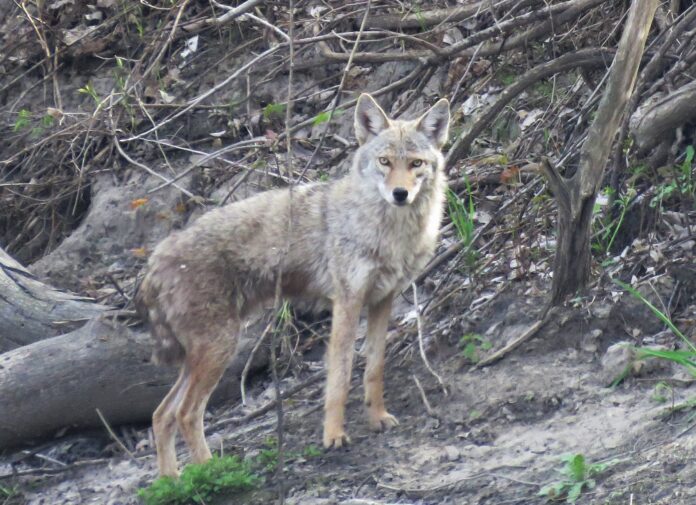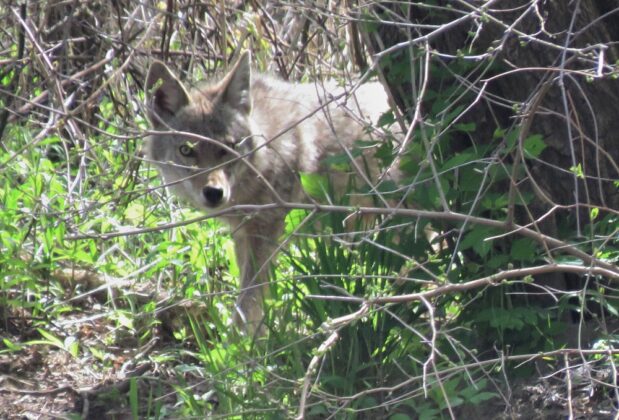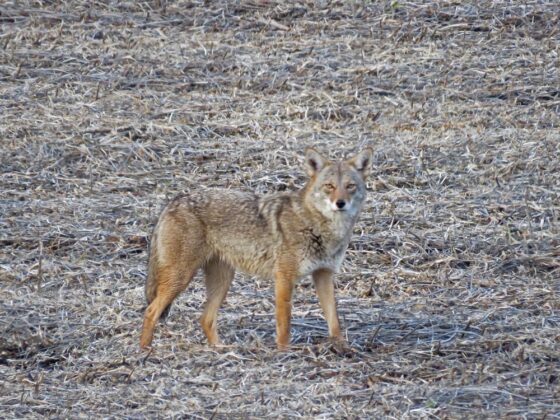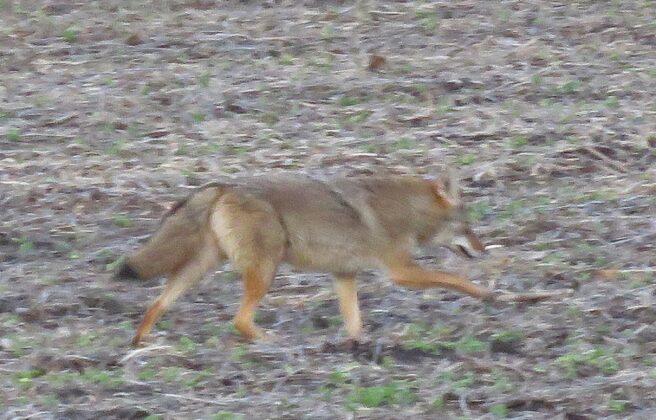I was camping in early August at a friend’s prairie on the banks of the Raccoon River. It was difficult for me to go to sleep because it was a warm, humid night, plus the night was full sounds.
Two birds seemed to be in competition for the most annoying call. A barred owl, somewhere down the river, was giving it’s, “Who, who, who, cooks for you?” call. The most annoying and sleep depriving call was the constant “song” of the whippoorwill that was very close to my tent.
Sleep finally came. It seemed as if I had just dozed off when I was awakened by the irritating yipping of coyotes. Peeking out the door of my tent and looking across the river, I saw a group of five coyotes walking on the sandbar.
The light of the full moon gave me a good view of their silhouetted forms and activities. Some of them walked to the river’s edge for a drink of water while the others sniffed around the logs and brush piles looking for prey.
Eventually they all got a drink of water and then they explored the debris scattered across the sandbar. They seemed particularly interested in a massive root ball of an old cottonwood tree. They sniffed around it for couple of minutes.
Suddenly something must have happened that I did not see or hear. The lead coyote of the pack let out a loud yip and took off with a fast lope up the steep riverbank. The others stopped in their tracks and looked at their leader and then began to follow it up the hillside.
They stopped on a flat, open area about halfway up the hill, and they all began to yip and howl. After about a half a minute of howling, they jogged over the hill top and disappeared.
Wow! What a show they had put on for me. The pack was about 100 yards from my tent and close to eye level. The coyotes’ voices of yips and howls produced a haunting but beautiful chorus as their calls echoed through the moonlit river valley.
I have heard coyotes howling many times on past camping trips. I have even heard their calls from my bedroom window on other warm nights, calling from the back fencerow of my acreage, but I never saw a pack howling in the light of a full moon like I did on this camping adventure.
Iowa State University Professor James Dinsmore, in his book, “A Country So Full Of Game,” says that wolves and coyotes were once common in Iowa, and they ranged across the state at the time of European settlement. Their exact range is difficult to determine because the settlers lumped both species together and referred to both as “wolves.”
Both were hunted, trapped, poisoned and shot by Iowa’s early settlers. They believed that these wild animals would kill their livestock, and local governments awarded bounties for each “wolf” that was killed.
The gray wolf was probably exterminated in Iowa around 1900, and the population of coyotes was in decline until the 1950s, when their numbers began to increase. Dinsmore attributes the increase of coyotes to the clearing of timber, giving the animals more of their preferred habitat.
The greatest population of coyotes occurs in western and southern areas of Iowa. In many places, their numbers are increasing, and they are considered to be a pest. Various methods of eradication are being used to remove them. Humans and coyotes don’t seem to be able to coexist as humans continue to make severe changes in the ecosystem.
I hope that my grandchildren will be able to hear these animals on their camping trips.
Humans are changing the environment so much that someday the howls and the yips of the coyotes and other wild critters might not be heard in river valleys and across the fields of Iowa. Also, the changes that are taking place in the environment can have deleterious effects on humans and our way of life.



















